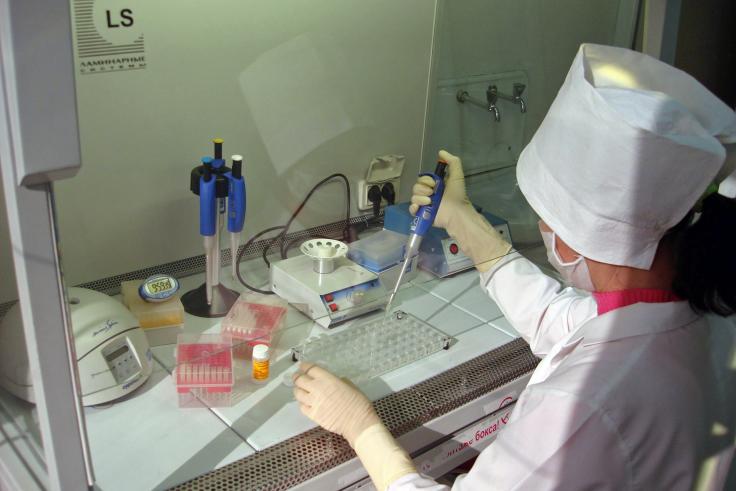 Pandemic Preparedness and Response through a One Health Approach
Pandemic Preparedness and Response through a One Health Approach
Background
The Pandemic Fund grant of $27 million will support a regional response to shared current and emerging threats to public health and food security in Central Asia. The five Central Asian countries, Kazakhstan, the Kyrgyz Republic, Tajikistan, Turkmenistan, and Uzbekistan, have historically faced common health, economic, social, developmental, and environmental vulnerabilities. As examples, zoonoses are very prevalent in the region and are expected to increase due to growing livestock production, regional trade, land degradation, loss of biodiversity, and climate change. Antimicrobial resistance (AMR) is widespread, underscoring the need for coordinated and concerted action. In November 2022, the countries endorsed their commitment to a regional response with the Joint Communique “Protecting food systems and preventing pandemics in Central Asia”, recognizing that regional cooperation can achieve prevention and control systems on a scale that single-country approaches, taken together, are unlikely to achieve. This multi-country Project is a partnership between Ministries of Health, Finance, Agriculture/Veterinarian Services, and Environment/Natural Resources of the participating countries and three Implementing Entities (IEs), including FAO, WHO, and the World Bank. The Project will build on existing World Bank-funded projects to bring in an additional $561 million in co-financing.
The associated World Bank projects include the Kyrgyz Republic Resilient Agri-Food Clusters Development Project and Emergency COVID-19 Project, the Tajikistan Milati Solim: Tajikistan Healthy Nation Project (proposed) and Strengthening Resilience of the Agriculture Sector Project, and Uzbekistan Second Livestock Sector Development Project. Project preparation drew on the existing body of Joint External Evaluation (JEE), Performance of Veterinary Services (PVS), and State Party Self-Assessment Annual Reporting Tool (SPAR) analyses and recommendations, and ongoing dialogue between the countries and partners. Other stakeholders, including farmers, pharmacists, community organizations, and academic and research institutions, were involved both in these assessments and consulted as part of project preparation.
Project objectives
The Project’s overall objectives are to: (1) reduce the risk of disease outbreaks, epidemics and pandemics; (2) improve regional food-systems resilience to shocks and climate change; and (3) increase agricultural competitiveness and trade, and ecosystem wellbeing in Central Asia.
Implementation arrangements and key components
Each of the participating countries will be responsible for the implementation of their respective project activities. When working on priority activities to improve JEE/PVS scores, countries will collaborate and coordinate across similar activities. FAO and WHO will be the primary IEs for Components 1-3 and the World Bank will be the primary IE for Component 4. The three IEs will form the Project Implementation Supervision Support Group, responsible for carrying out supervision, monitoring and evaluation and reporting activities.
The four project components, and their main activities, are described below. Participating IEs are indicated under each component of the activity.
- Strengthening effective multisector national and regional surveillance systems for pandemic PPR. This component supports the development of national and regional One Health surveillance systems. This will be complemented by annual One Health PPR simulation exercises and after/intra-action reviews. The component will also support the establishment of AMR networks across the participating sites to support activities on AMR surveillance, including adoption and implementation of AMR Action Plans and further development of AMR regulations for data collection, analyses and reporting. Additional activities will include zoonotic disease surveillance, contingent on the participating country’s JEE/PVS scores, through the development of multi-sector coordination systems (FAO, WHO).
- Supporting effective multisector national and regional laboratory networks for pandemic PPR. This component supports all the participating countries in the development of a regional as well as national One Health laboratory networks through support for the update of laboratory standards/guidelines, mapping, design, and development of management information systems. Subsequent activities include supporting External Quality Assurance assessments to ensure testing efficiency for the priority diseases within the region. Based on the countries' JEE/PVS scores, the component will also support the development of specimen referral/transport systems, testing modalities, and national diagnostic networks, and subsequent implementation of tier-specific testing strategies at the country level (FAO, WHO).
- Strengthening multisector national and regional workforce for pandemic PPR. This component supports the development of a multisectoral workforce strategy for effective staffing of professional and technical personnel across the veterinary, environmental and public health services. It provides support for undergraduate and graduate training of One Health-specific staff on specialized technical activities. Based on country JEE/PVS scores, where necessary, the component will support regular competency-based training programs on standards relating to One Health for professionals across the different sectors at national and subnational levels. Additional training on the implementation of the International Health Regulations (IHR) will also be provided in some of the participating countries. Field Epidemiology Training Programs, training in risk communication and community engagement, and in biosafety and biosecurity practices will also be supported (FAO, WHO).
- Supporting and promoting effective national and regional governance for pandemic PPR. This component will support development of national coordination and collaboration mechanisms through the establishment of national and regional One Health PPR governance mechanisms for policy and technical management of the Project and its specific components. The Project will also support the development of strategies for the additional mobilization of financial resources with technical assistance from the Tripartite Alliance for One Health and the World Bank (World Bank).
Expected outcomes
JEE/PVS ratings for the most critical gaps identified are expected to improve, based on new assessments to be carried out before the Project ends. More generally, the Project is expected to increase capacity for surveillance systems, laboratories and the workforce, to improve national and regional coordination, and to mobilize additional pandemic PPR funding and ensure its efficient use. This in turn is expected to reduce the risk of pandemics and their health, social, and economic impact in Central Asia.
For general inquiries: the_pandemic_fund@worldbank.org
-
 RegionProject RegionsEurope & Central Asia
RegionProject RegionsEurope & Central Asia -
 CountriesProject CountriesKazakhstan Kyrgyz Republic Tajikistan Turkmenistan Uzbekistan
CountriesProject CountriesKazakhstan Kyrgyz Republic Tajikistan Turkmenistan Uzbekistan -
 Amount Approved (US$) $27,160,421
Amount Approved (US$) $27,160,421 -
 Total Co-financing
Total Co-financing
(in kind & in cash) (US$) $560,671,510 -
 Total Co-investment
Total Co-investment
(in kind & in cash) (US$) $30,288,948

